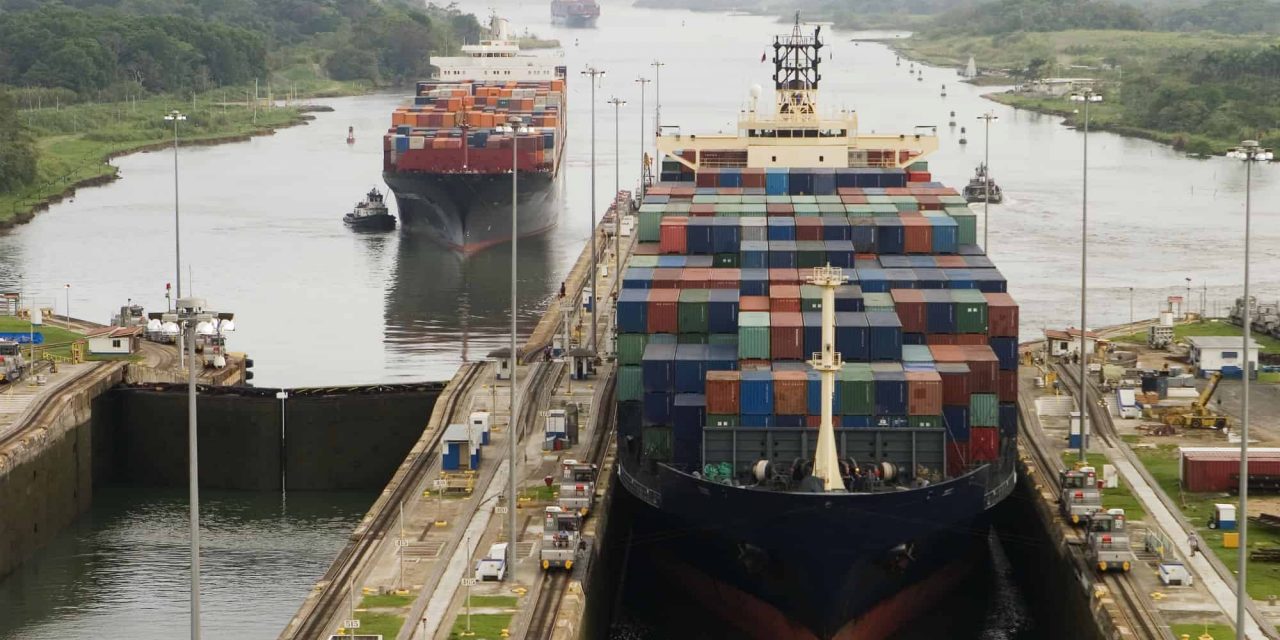See the Iconic Route Your Shipping Takes to the West Coast of the United States and Canada
If you’re moving to the west coast of the United States or Canada, it is quite likely that the goods you ship will travel through the Panama Canal.
With England playing Panama in the World Cup on Sunday, we thought we’d take a look at this iconic shipping route that we take so much for granted.
Using the canal, it takes container ships just 10.5 hours on average to go from the Caribbean Sea to the Pacific Ocean. This saves weeks on the time it would take your goods to reach Los Angeles or Vancouver if they had to travel around Cape Horn.
Here’s a look at this legendary journey and some fascinating facts about the Panama Canal.
Unique Time Lapse Video of a Ship Going Through the Panama Canal
Fascinating Facts About the Panama Canal:
- Panama was chosen as it is so narrow – in fact, it is the only place in the world where you can see the sunrise on the Pacific and set on the Atlantic (see video below).
- The first mention of a canal to cross Panama was by King Charles I of Spain who wanted an easier and safer route to Peru.
- The first serious attempt to build the canal was made by the French between 1881 and 1894 but failed with an estimated 22,000 lives lost to disease and accidents.
- The United States took over the construction of the canal in 1904 after Panama gained independence from Columbia.
- Original schemes planned to build the canal at sea level, but torrential rain and mudslides made this impossible.
- Instead, locks at each end of the canal raise ships up to Gatun Lake and then lower them back down on the opposite coast.
- Gatun Lake is 26 meters above sea level and at the time it was built was the largest artificial lake in the world.
- The cargo ship Ancon was the first vessel to transit the Canal on August 15, 1914.
- All vessels going through Panama Canal have to pay a toll. The toll is based on the type of vessel, its size, and its cargo. The highest toll ever paid was $376,000 by the Norwegian Pearl cruise ship in 2010.
- The lowest toll paid was by American adventurer, Richard Halliburton, who paid $0.36 to swim the length of the Canal in 1928.
- Each time a ship transits the canal 202,000 m3 (53,400,000 US gal) of water is passed from the lake into the sea.
- Nearly 14,000 vessels transit the Panama Canal every year.
- In 2015 canal traffic reached 340.8 million tons (a lot more than the originally planned maximum capacity of 80 million tons).
- The canal with its cargo shipping generates one-third of Panama’s entire economy.
- The original locks are 33.5 meters wide – ships small enough to pass through are known as ‘Panamax’.
- In June 2016 a third lane was completed with wider locks to allow larger modern container ships to pass through the canal – these are known as ‘neopanamax’
- A rival Chinese backed canal has been approved in Nicaragua but is facing environmental objections and challenges raising the US$50 billion investment required.
Two not so useful bonus facts:
- “A man, a plan, a canal; Panama.” is a palindrome (try reading it backwards!).
- The Panama Hat is actually made in Ecuador!
Image Source: Wikipedia







